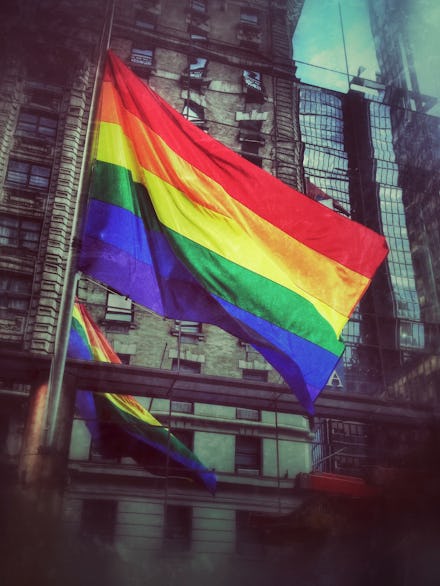2 Maps Show How Gay Marriage Swept the Nation in 2014

It's been an exhilarating year for Americans who favor marriage equality, with an uptick in legal victories bringing the country to a historic tipping point.
With 2015 nearly upon us, roughly two-thirds of Americans reside in one of 35 states currently issuing marriage licenses to same-sex couples, according to the advocacy group Freedom to Marry.
The maps below from Freedom to Marry show the remarkable pace of progress over the last year. The states in deep red have full marriage equality, while bans are still in place in white states. States with red stripes have pro-gay marriage court rulings that are on hold pending appeal. The green-shaded states in the 2014 map on the right represent states where marriage bans have been upheld but could potentially be reviewed by the U.S. Supreme Court:
Most of this year's surge in activity occurred in the fall through court decisions, with judges declaring gay marriage legal in a slew of states.
The number of states allowing same-sex marriage has reached a historic threshold that a number of legal observers believe could cause the nation's highest court to take up the issue in the near future.
The way forward: Walter Dellinger, an acting solicitor general in the Clinton administration, told the New York Times that the volume and pace of gay marriage's progress is likely to increase the chances that the Supreme Court will hear the matter and strike down state bans.
"Historically, there seems to be a tipping point at which the justices seem more comfortable setting aside state practices," he said. "When only a third of the states still retain a practice, the court seems ready to act."
As legal correspondent Adam Liptak notes in the New York Times, one of the precedents here would be when the Supreme Court struck down a ban on interracial marriage in 16 states in 1967. The number of states that currently don't allow same-sex marriage is nearly the same. But this comparison breaks down when accounting for the way in which most the states legalized gay marriage: through their state legislatures, not through the decisions of individual judges. The former suggests a broader kind of legal consensus.
U.S. Court of Appeals Judge Jeffrey Sutton — who authored the main opinion in a Sixth Circuit decision upholding bans on same-sex marriage in Kentucky, Michigan, Ohio and Tennessee this year — cited this as as the reason for his decision: "When the courts do not let the people resolve new social issues like this one, they perpetuate the idea that the heroes in these change events are judges and lawyers."
The other major bit of news came from the White House, when Barack Obama evolved once again on the matter and said for the first time that a federal constitutional right to same-sex marriage was feasible.
"Ultimately, I think the Equal Protection Clause does guarantee same-sex marriage in all 50 states," Obama told the New Yorker in October, in a reference to the 14th Amendment's mandate that states not arbitrarily discriminate between citizens.
Momentum appears to be on the side of advocates for marriage equality — a right which is far more than symbolic.